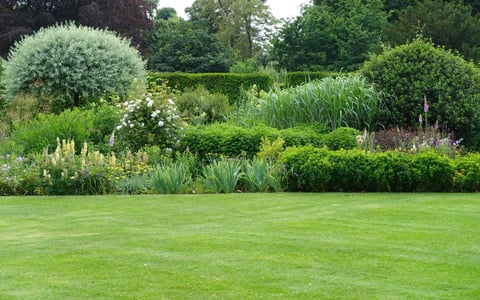Enhance Your Garden with garden lighting
Discover how garden lighting enhances the aesthetic and functionality of outdoor spaces. Transform your landscape into a mesmerizing environment while ensuring safety during nighttime with our expert outdoor and landscape lighting solutions.
5/21/20254 min read


The Art of Garden Lighting: Illuminating Your Space
Garden lighting plays a pivotal role in enhancing the overall aesthetic and functionality of outdoor spaces. It not only ensures safety during nighttime but also adds an element of beauty that can transform a plain landscape into a mesmerizing environment. The strategic placement of lights can highlight various features within a garden, creating an inviting atmosphere for gatherings, relaxation, and exploration after dark.
There are several types of garden lighting options available, each serving a distinct purpose. Path lights, for instance, provide essential illumination for walkways, ensuring that guests can navigate safely. These lights are typically low to the ground and come in a range of styles and brightness levels, allowing for customization that complements the overall garden design. Spotlights, on the other hand, can be used to draw attention to specific features such as trees or sculptures, creating focal points that enhance the visual interest of the landscape.
Ambient lighting is another important aspect of garden illumination, creating a soft glow that sets the mood for outdoor activities. This type of lighting can be achieved through fixtures such as string lights, lanterns, and recessed lights, which all contribute to creating a warm and inviting space. To effectively integrate lighting into your landscaping design, consider the hierarchy of light levels and the contrast between illuminated and shadowed areas, as this will create depth and dimension.
When planning the placement of garden lights, consider energy-efficient options such as LED fixtures, which not only reduce electricity consumption but also have a longer lifespan. Additionally, incorporating solar lights can further enhance sustainability, as they harness natural energy during the day to illuminate your garden at night. By employing thoughtful techniques in lighting placement and selection, the beauty of your outdoor space can be highlighted, offering both functionality and visual appeal.
Creating Comfort with Pergolas and Sunshades
In the pursuit of transforming outdoor spaces into comfortable and inviting areas, the incorporation of pergolas and sunshades plays an essential role. These structures not only provide aesthetic appeal but also offer functional benefits that enhance the overall outdoor experience. Pergolas, which can be constructed from a variety of materials such as wood, aluminum, or vinyl, serve as versatile design elements in garden landscaping. Depending on personal style and architectural needs, they can be crafted in various designs, including classic, contemporary, or rustic styles, that naturally complement the overall appearance of a villa.
The functional advantages of pergolas are significant. They provide partial shade, allowing for a comfortable environment to enjoy outdoor gatherings during warmer months. By strategically placing a pergola over a patio or sitting area, homeowners can create a focal point in their outdoor design, establishing a space for rest and recreation. Furthermore, the open structure of a pergola allows for climbing plants to flourish, effectively integrating nature with modern design and inviting biodiversity into the garden.
Equally vital are sunshades, which serve to protect both users and plants from the harsh intensity of direct sunlight. These can come in the form of retractable awnings, fixed canopies, or shade sails, each offering varying levels of protection and design flexibility. By selecting materials that are durable and suitable for outdoor conditions, sunshades can significantly enhance the usability of outdoor spaces, encouraging time spent in the garden year-round. When paired with complementary landscaping elements, such as seating areas or garden beds, sunshades create a more cohesive and inviting atmosphere, allowing homeowners to maximize their outdoor living spaces.
Elevating Home Aesthetics with Villa Paint Work
Painting is more than just an aesthetic enhancement; it serves as a vital element in the overall design and appearance of a villa. A well-planned paint scheme can significantly uplift the visual aspects of a home, harmonizing it with the surrounding environment. When considering paint work, selecting an appropriate color scheme is crucial. Neutral tones often provide a classic and elegant backdrop, allowing architectural features to stand out, while bold colors can make a striking statement, drawing the eye to specific details.
Employing various techniques in exterior painting can further enhance the villa’s charm. For instance, using textures can add dimension to surfaces, making them visually appealing. Techniques like sponge painting or rag rolling can introduce depth and interest. Additionally, the choice of paint must be appropriate for the surface material, whether it is wood, brick, or stucco. Each material may require a specific type of paint to ensure adhesion and longevity, thus protecting the structure from the elements.
Another essential aspect is the maintenance of the paintwork. Regularly inspecting the exterior for signs of wear, such as peeling or fading, will help in planning repainting efforts before the damage worsens. Utilising high-quality paints formulated to withstand harsh weather can drastically increase the lifespan of the paint. Properties located in areas with intense sun or heavy rain may benefit from UV-resistant and water-repellent coatings, ensuring that the villa remains vibrant and protected year-round.
Incorporating these strategies not only elevates the aesthetics of a villa but also enhances curb appeal, boosting the property's overall value. Effective paint work contributes to a home’s unique character, providing a personalized touch that reflects the homeowner’s style while ensuring durability and functional integrity against environmental challenges.
Nurturing Nature: Indoor and Outdoor Plant Supply and Landscaping
In the realm of garden design and landscaping, the inclusion of both indoor and outdoor plants plays a pivotal role in enhancing the overall aesthetic and ecological balance of the environment. Selecting the right types of plants, which are adaptable to their specific surroundings, is crucial for creating a thriving garden. Indoor plants such as snake plants, pothos, and peace lilies not only purify the air but also add vibrancy to interior spaces, whereas outdoor plants like lavender, marigolds, and ornamental grasses can make landscapes visually appealing and ecologically beneficial.
When planning your outdoor layout, flower bed arrangements become essential. Raised beds offer superb drainage and soil quality while permitting easier access for maintenance and harvesting. Ground flower beds, on the other hand, can create a lush and welcoming atmosphere when designed thoughtfully. Selecting compatible plants to flourish together enhances not just visual interest but also increases biodiversity, as certain plants can support one another through pest control and nutrient sharing. For instance, combining marigolds with vegetables can ward off pests while fostering a flourishing ecosystem.
Tree installation is another significant factor in the overall garden design. Trees provide shade, shelter, and habitat for wildlife, while also contributing to the beauty of your outdoor space. It is essential to choose tree species that are suitable for the climate and soil of your garden, ensuring they thrive and enhance the overall landscape design. A well-considered plant layout—incorporating diverse flora from trees to perennials and succulents—forms a cohesive garden that nurtures nature, attracts pollinators, and creates a serene environment for relaxation and enjoyment.
